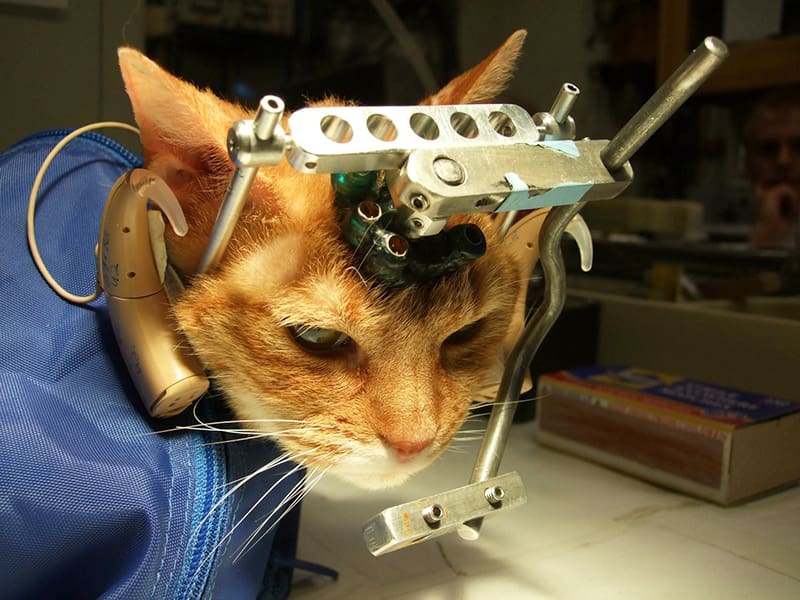Are you looking for meaningful Animal testing statistics for Germany, Europe and the world? Then you've come to the right place. Lately, I've been thinking about the sense and purpose of Animal testing and came up with a lot of facts and figures, including the number of animals used, the severity of the exposure, public opinion, and the findings.
In this article I would like to provide you with the most important statistics about animal testing. Also, so that more people have a greater awareness of this form of cruelty to animals get
Notice: If you use any of the animal testing statistics from this post, please cite the following source. Thank you for your support!
https://www.careelite.de/tierversuche-statistiken-zahlen-faktenGeneral statistics on animal testing
Let's start with some general figures on animal experiments. For Germany, I have found many valuable statistics - globally, there are only conservative estimates.
My please: If you know of other statistics and reliable sources around animal testing, feel free to drop me a comment with your reference.
Facts and figures on animal experiments in Germany
- Laboratory animals: In 2018, 2,825,066 animals were used for scientific purposes in Germany.₁
- Killed animals: In animal experiments in Germany in 2018, 686,352 animals were killed.₂
- Basic Research: In 2018, 937,756 laboratory animals were used for basic research purposes in Germany.₁₈
- Applied Research: In 2018, 323,095 were used for scientific purposes in applied research in Germany.₁₉
- Experimental purposes: 44 percent of all animal experiments in Germany in 2018 were used for basic research. Only 0.6 percent served to preserve the species and only 0.4 percent to protect the natural environment.₂₀
- Severity: 61 percent of the animal experiments in 2018 are classified as "low" stressful and 27 percent as normal or "medium" stressful. In each case, 6 percent of the animal experiments were "severely" stressful for the laboratory animals or it was "not possible to restore vital function".₂₁
- Genetic modification: About 55 percent of the test animals did not undergo any genetic modification. As "genetically modified without pathological phenotype" 38 percent and as "genetically modified with pathological phenotype" 7 percent are considered.₂₂
Notice: You can find more detailed facts and figures about the individual laboratory animals a little further down in the paragraph about the laboratory animals themselves.
Facts and figures on animal testing worldwide
- Worldwide, more than 115 million animals die in animal experiments every year. The number of unreported cases is said to be significantly higher.₃
- The USA is said to account for the majority of animals killed in animal experiments worldwide, with around 70 million animals. In the EU, the total is around 11 million animals per year.₂₆
Facts and figures about laboratory animals

Now we'll turn to the statistics surrounding the laboratory animals themselves. First, I will present two figures that show that animal experiments are often not transferable to humans. Then you will find out approximately how many animals of a certain species are tested in German laboratories.
- Asbestos: Rats, for example, tolerate 300 times more asbestos before developing cancer.₅
- Bacteria: Mice need about one million more bacteria than humans before blood poisoning occurs.₆
- Mice: In 2018, 1,539,575 mice were used for animal experiments in Germany. For the previous year, 1,368,447 mice were still recorded.₁₀
- Rats: In 2018, 222,811 rats were used for animal experiments in Germany.₁₁
- Rabbit: In 2018, 85,193 rabbits were used for animal experiments in Germany.₁₂
- Birds: In 2018, 30,393 birds were used for animal experiments in Germany.₁₃
- Pisces: In 2018, 192,040 fish were used for animal experiments in Germany.₁₄
- Cats: In 2018, 765 cats were used for animal experiments in Germany.₁₅
- Dogs: In 2018, 3,979 dogs were used for animal experiments in Germany.₁₆
- Monkeys: In 2018, 3,288 monkeys were used for animal experiments in Germany.₁₇
You can find more detailed statistics about animal testing in the Report of the Federal Ministry of Food and Agriculture on the use of laboratory animals.
Figures on funding for animal experiments
With such a high number of animals studied and with the general discussion about the sense of animal experiments, the statistics on government support should not be missing. I present them to you here:
- Animal testing budget: Every year, 2.1 billion euros of taxpayers' money is made available in Germany for animal experiments with mice alone.₈
- Promoting non-animal research: Animal-free research in Germany is funded with 4-5 million euros annually.₉
These figures are indicative - but unfortunately, in my opinion, they point in a direction that is anything but contemporary.
Statistics on findings from animal experiments
Of course, it is also important to look at the success of animal testing. I have found the following two statistics on this:
- Fatal consequences for humans: Every year, 58,000 people die from drugs tested on animals.₄
- Success rate: About 95 percent of drugs deemed effective and safe for humans after animal testing fail clinical trials and do not receive marketing approval. Of the approved drugs, 20 - 50 percent are later withdrawn from the market or come with warning labels.₇
Statistics from surveys on general opinion about animal testing
There are also meaningful facts and figures on social opinions surrounding the topic of animal testing:
- Trial Purpose: 33 percent of Germans thought animal testing was most likely to be useful for pharmaceutical research in 2016.₂₃
- Animal species: Around 45 percent of Germans voted respectively that flies and worms are the most likely to be used for animal experiments. 24 percent named monkeys, dogs and cats as the answer,₂₄
- Prohibition: 56 percent of Germans think that animal testing should be banned as a matter of principle.₂₅
Do you know any other vital statistics? Then just write me a comment under this post.
Using animal testing statistics for education
With this collection of facts around the topic of experiments with animals, I would like to contribute to the fact that the awareness of this kind of abuse of animals in our society grows. Use also the these statistics to enlighten for example by articles or lectures. Everyone can and should Help animals - because that is human.
Do you have any questions or facts about animal testing that should definitely show up here? Then I look forward to your comment.
Be always kind to animals,

PS.: Look with pleasure in the animal welfare blog by! There you can also, for example, form an opinion on whether or not Zoos still contemporary and meaningful are.
Notice: If you use any of the animal testing statistics from this post, please cite the following source. Thank you for your support!
https://www.careelite.de/tierversuche-statistiken-zahlen-faktenReferences:
₁,₂,₁₀,₁₁,₁₂,₁₃,₁₄,₁₅,₁₆,₁₇,₁₈,₁₉ Federal Ministry of Food and Agriculture (BMEL 2018): Use of laboratory animals in 2018, available at https://t1p.de/cnvi. [07.04.2020]
₃ animal-fair; Association for Fairness to Animals: Tierversuche - Zahlen, Daten, Fakten, available at https://t1p.de/nmms. [07.04.2020].
₄,₅,₆,₇,₈ Ärzte gegen Tierversuche e.V.: Fakten über Tierversuche, available at https://t1p.de/o66a. [07.04.2020].
₉ Ärzte gegen Tierversuche e.V.: What do animal experiments cost?, available at https://t1p.de/vhqr. [07.04.2020].
₂₀,₂₁,₂₂,₂₃,₂₄,₂₅ Statista GmbH: Tierversuche in Deutschland, available at https://t1p.de/mvsy. [08.04.2020].
₂₆ Verein Gegen Tierfabriken: Background Knowledge on Animal Testing, available at https://vgt.at/projekte/tierversuche/fakten.php. [08.04.2020].




